This past weekend, we attended the Crane Festival in Monte Vista with a group of birders from Audubon Denver. Soon after arriving, we made our way to the National Wildlife Refuge south of Monte Vista. Compared to previous years, the weather was much colder. There was plenty of snow on the ground and ice on the wetlands. During the evening hours, the Sandhill Cranes and other water fowl fly in to the wetlands, where they are safer from predators (such as coyotes).
In the fall, Sandhill Cranes migrate to Bosque del Apache, in New Mexico, where they spend the winter months.The Monte Vista refuge is one of the locations where Sandhill Cranes stop on their annual migration to the summer breeding grounds that stretch from northern Colorado, through Wyoming, Montana, Idaho to Canada.
We returned to the same location in wildlife refuge the following morning just as the sun was rising over the Sangre de Cristo mountains. The cranes were backlit against the rising sun.
Soon after sunrise, the cranes flew out to fields in the area where they feed on grain and other tasty goodies. Here they fatten up in preparation for the continuing migration later this month.
Later the same morning, we made our way to the Ski-Hi center, where we joined many other birder visitors for a Raptor Tour. We climbed aboard two school buses for a guided tour to see various raptors that live in the area. The guides pointed out various raptors, including Red-Tailed Hawks, Bald Eagles (our national bird), Rough-Legged Hawks and a Northern Harrier. Along the way, we stopped at one location where two Red-Tailed Hawks had taken up residence in a nest. Here we got out our binoculars, scopes, etc to get a better view of the birds.
After the tour ended, other activities related to birding included lectures held at the Middle School.
We attended a lecture on Bluebirds in the one hall where seating comprised of yellow chairs.
The lecturer, Kevin, showed a video of bluebirds nesting. This showed the development of a family of bluebirds from the laying of the eggs through incubation and rearing of the nestlings. Finally, after two weeks, the young bluebirds fledged. The remainder of the lecture dealt with the national effort to raise bluebirds and monitor the breeding of the species. Kevin brought these nesting boxes to show the various birds that make use of the nesting boxes. Volunteers purchase and maintain the nesting boxes throughout the year; they also monitor the progress of breeding through the season.
We attended a second lecture by Gail (from Hawks Aloft). She gave an excellent presentation about the various raptors that make Colorado and New Mexico their home, either full-time or part of the year. Gail was also the tour guide on our bus earlier in the day.
After attending this lecture we rejoined our group and made our way back to the wildlife refuge for the evening fly-in. The sun was setting, just catching the mountain peaks of the Sangre de Cristo range. Here we found a group of cranes feeding in front of the distant Blanca Peak, one of the 14’ers in the mountain range.
On Sunday morning we left Monte Vista. I had eyed this unusual building at the edge of one of the irrigation ditches that are located in the San Luis valley. This appears to be one of many pump houses that may be found in the area.
We briefly visited the Alamosa wildlife refuge, but bird life was very sparse for this time of the year. Late spring and summer are better seasons for this refuge.Soon after we headed back to Denver, encountering a snow storm along the way.

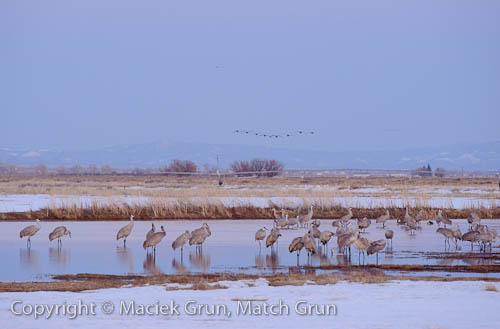
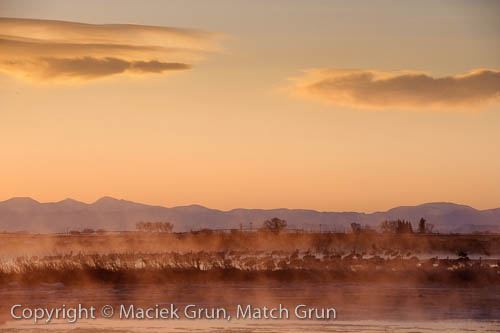
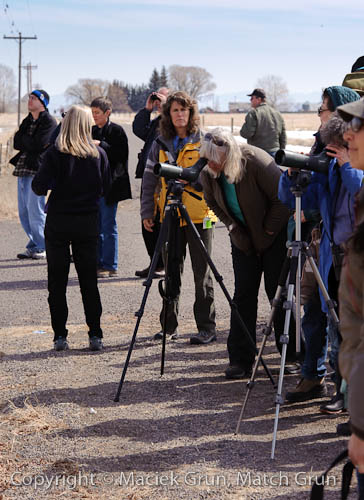
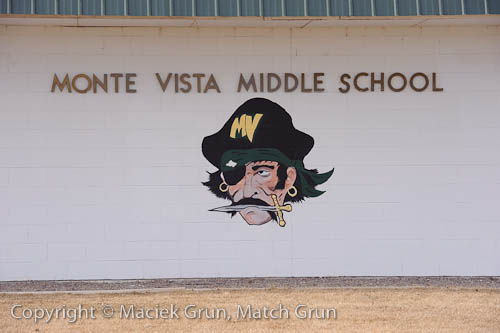

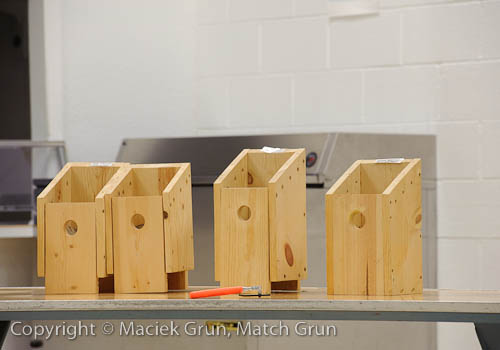
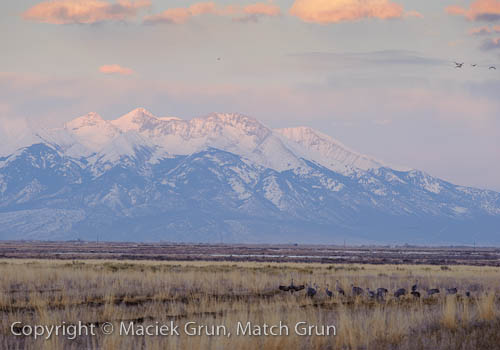
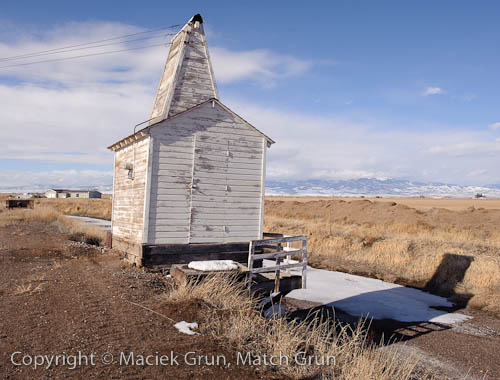
Beautiful photos!
Thank you. Enjoy.
Nice pictures of the cranes, however the pump house could use the vintaging up. Like the photos, nice.